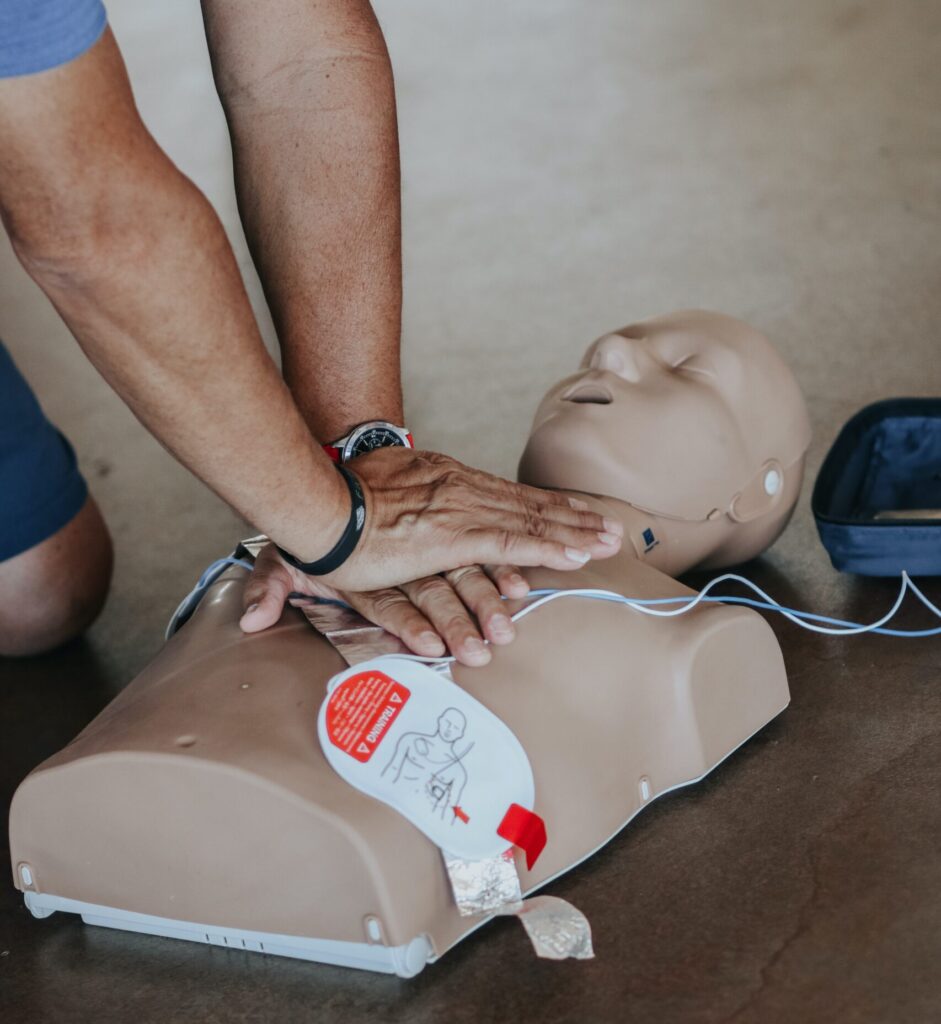In moments of crisis, having the knowledge and confidence to administer life-saving techniques can make all the difference. When someone suddenly faints, quick and appropriate action is crucial to their well-being. Cardiopulmonary Resuscitation (CPR) is a fundamental skill that can help sustain a person’s life until professional medical assistance arrives. In this article, we will explore simple and easy ways to give CPR when people suddenly faint.
We will cover what to do when someone faints, essential first aid for fainting incidents, dos, and don’ts, and provide step-by-step guidance to ensure you are well-prepared to respond effectively.
What to Do When Someone Faints Suddenly?
Fainting, also known as syncope, occurs when there is a brief loss of consciousness due to a temporary drop in blood flow to the brain. While most fainting episodes are not life-threatening, it is crucial to respond promptly and appropriately to ensure the person’s safety. Here’s what you should do:
- Assess the Situation: Ensure your safety and the safety of the person who has fainted. Check for any immediate dangers, such as sharp objects or traffic.
- Check Responsiveness: Gently tap the person and call out to them. If there is no response, they may have fainted.
- Positioning: Carefully lay the person on their back on a flat surface. Elevate their legs slightly to encourage blood flow back to the brain.
- Monitor Breathing: Check if the person is breathing. Look, listen, and feel for signs of normal breathing for about 10 seconds.
- Call for Help: If the person does not regain consciousness within a minute, or if their breathing is abnormal, call emergency services immediately.
Simple and Easy CPR Steps to Follow
CPR is a vital skill that can help maintain blood circulation and oxygenation when someone’s heart has stopped. While traditional CPR involves chest compressions and rescue breaths, hands-only CPR can be effective for bystanders who are not trained in formal CPR techniques.
- Call for Help: Dial emergency services immediately.
- Position the person: Carefully lay the person flat on their back on a firm surface. Ensure their head is slightly tilted back to open the airway. You can do this by touching their forehead and gently tilting their head backward.
- Begin Chest Compressions: If the person is not breathing or is breathing abnormally, you need to start chest compressions immediately. Here’s how:
- Position your hands: Place the heel of one hand (usually the dominant hand) on the center of the person’s chest, slightly below the nipple line. Put your other hand on top of the first hand, interlocking your fingers.
- Compression depth: Press down hard and fast, aiming for a depth of about 2 inches (5 centimeters) in adults and about 1.5 inches (4 centimeters) in children. Allow the chest to fully recoil between compressions.
- Compression rate: Aim for a rate of about 100-120 compressions per minute. You can mentally count “1 and 2 and 3 and 4…” to maintain the proper rhythm.
- After 30 compressions, it’s time to give rescue breaths to provide oxygen to the person’s lungs.
- Continue Compressions: Continue chest compressions until professional help arrives or the person regains consciousness.

First Aid for fainting Do’s and Dont’s
What you can do is
calmly assess the situation and ensure the surroundings are safe. Approach the individual and gently lay them on their back on a flat surface, elevating their legs slightly to promote blood flow to the brain. This initial positioning can help prevent further complications. Always prioritize their well-being and check their airway to ensure it’s clear and unobstructed.
Calling for professional medical help is crucial. Promptly dial emergency services to ensure timely assistance. If the person is not breathing or breathing is irregular, initiate CPR by starting chest compressions and rescue breaths in a coordinated manner. Properly performing CPR can make a significant difference in their chances of survival.
What you shouldn’t do
panicking. Maintaining a calm and composed demeanor is essential, as panic can hinder your ability to assess the situation accurately and respond effectively. Similarly, avoid leaving the person unattended. If you’re alone, call for help immediately and follow the appropriate first aid steps.















